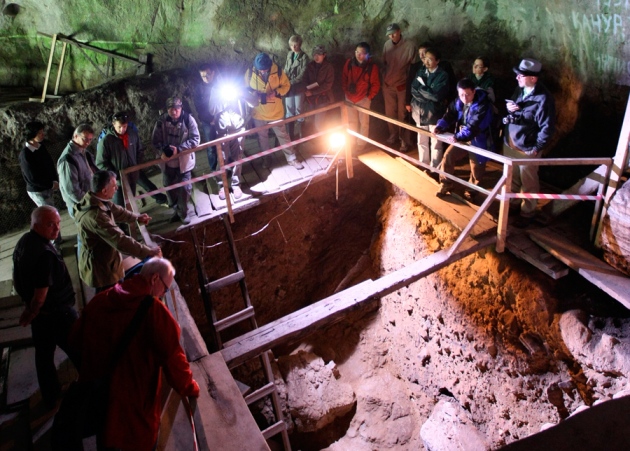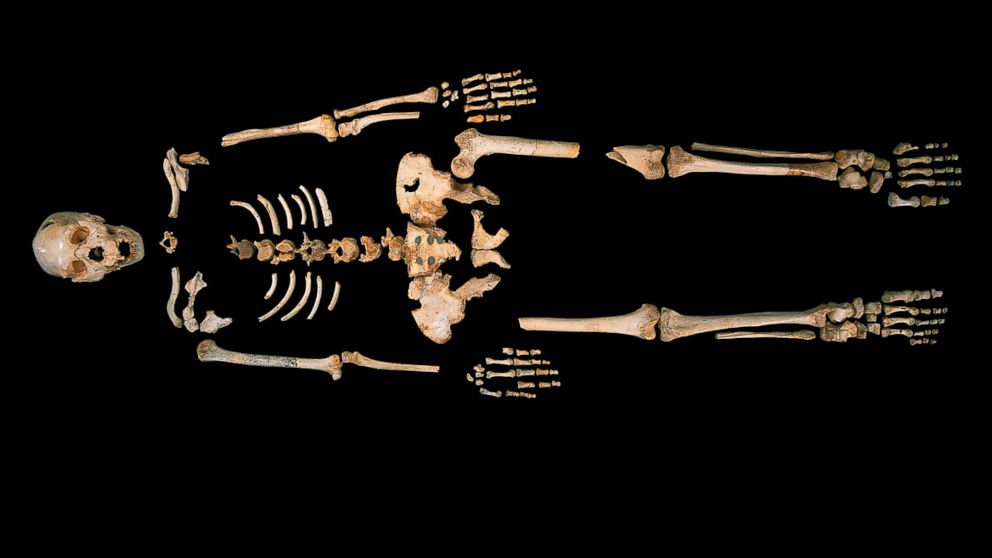New Genetic studies of Neandertals and Denisovans as reported in Nature reveals a "mystery species" (population? subspecies?) they seemed to have bred with. The problem is, we haven't found any of their remains, but their genes seem to be embedded in the first two populations.

http://www.nature.com/news/mystery-humans-spiced-up-ancients-rampant-sex-lives-1.14196
Here's another treatment of the story:
http://www.the-scientist.com/?articles.view/articleNo/38361/title/Ancient-Genomes-Reveal-Secrets/
And in other Asian genomic news, another Nature paper relates Native Americans to Europeans through a 4 year old Siberian boy, but curiously not to East Asians... yet.
http://www.nature.com/nature/journal/vaop/ncurrent/full/nature12736.html
Here's a BBC article summarizing the find:
http://www.bbc.co.uk/news/science-environment-25020958

UPDATE: Atapuerca, Spain- Genetic testing reveals atapuerca 5 (Homo heidelburgensis) was related to Denisovans, NOT, as previously thought, Neandertals.

Brief, pretty good:
http://www.ansamed.info/ansamed/en/news/sections/culture/2013/12/05/Spain-Oldest-hominid-DNA-uncovered-Atapuerca_9730700.html
A bit more in-depth, gives better context:
http://www.businessinsider.com/400000-year-old-human-dna-in-pit-of-bones-2013-12
Brief, not particularly good:
http://abcnews.go.com/Health/pit-bones-yields-oldest-human-dna/story?id=21093890
Haven't been able to open this on to read it, but New Scientist is usually better than most for science journalism:
http://www.newscientist.com/article/mg22029462.600-oldest-human-genome-dug-up-in-spains-pit-of-bones.html
From BBC:
http://www.bbc.co.uk/news/science-environment-25193442

http://www.nature.com/news/mystery-humans-spiced-up-ancients-rampant-sex-lives-1.14196
Here's another treatment of the story:
http://www.the-scientist.com/?articles.view/articleNo/38361/title/Ancient-Genomes-Reveal-Secrets/
And in other Asian genomic news, another Nature paper relates Native Americans to Europeans through a 4 year old Siberian boy, but curiously not to East Asians... yet.
http://www.nature.com/nature/journal/vaop/ncurrent/full/nature12736.html
Here's a BBC article summarizing the find:
http://www.bbc.co.uk/news/science-environment-25020958

UPDATE: Atapuerca, Spain- Genetic testing reveals atapuerca 5 (Homo heidelburgensis) was related to Denisovans, NOT, as previously thought, Neandertals.

Brief, pretty good:
http://www.ansamed.info/ansamed/en/news/sections/culture/2013/12/05/Spain-Oldest-hominid-DNA-uncovered-Atapuerca_9730700.html
A bit more in-depth, gives better context:
http://www.businessinsider.com/400000-year-old-human-dna-in-pit-of-bones-2013-12
Brief, not particularly good:
http://abcnews.go.com/Health/pit-bones-yields-oldest-human-dna/story?id=21093890
Haven't been able to open this on to read it, but New Scientist is usually better than most for science journalism:
http://www.newscientist.com/article/mg22029462.600-oldest-human-genome-dug-up-in-spains-pit-of-bones.html
From BBC:
http://www.bbc.co.uk/news/science-environment-25193442
No comments:
Post a Comment